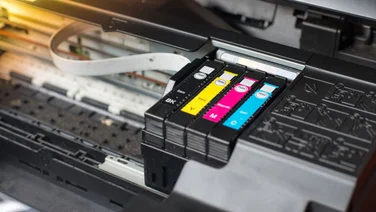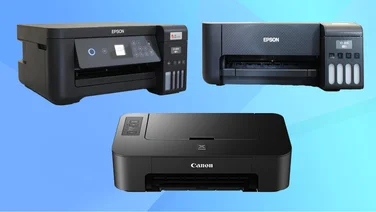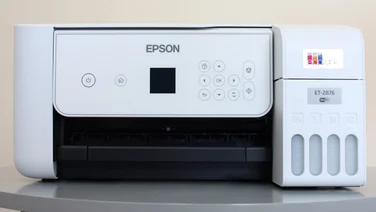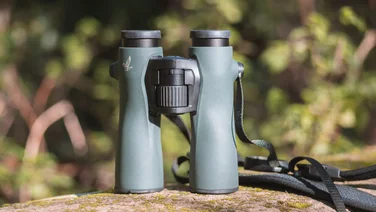To help us provide you with free impartial advice, we may earn a commission if you buy through links on our site. Learn more











The home entertainment industry’s fervent excitement for 3D seems to have outpaced the public’s appetite for it. Given this, the reactions the Fujifilm W3 camera evoked in the people we showed it to were remarkable: confused disbelief, giddy delight, a few nonplussed shrugs (not everyone can see 3D images) and only one case of recoiling nausea.
The W3 is a 3D digital camera, with twin lenses and CCD sensors to capture a stereoscopic image. Its lenses are spaced 75mm apart to mimic the space between a pair of human eyes, and the subtly different images they capture deliver the visual cues that give 3D photography its sense of depth.

Things get a little more complicated because human eyes go slightly crossed to focus on objects, depending on how near they are. The W3 simulates this by shifting the images so that the autofocus point is aligned in the left and right images. It struggled for subjects nearer than a couple of metres away, but from across the room to the distant horizon, it took most subjects it its stride.
Only the left lens is used while composing shots, and as a result we often accidentally obscured the right lens with a finger. We eventually got into the habit of holding the camera more carefully. Otherwise, 3D photography proved to be surprisingly easy. There’s no face detection or other cleverness in 3D mode – the focus point is fixed to the centre of the frame – but deft use of the half shutter press let us choose the point of focus and then reframe the shot. If the 3D effect looks confused – and it often did, particularly in our initial attempts – it’s possible to adjust the alignment manually using a manual parallax control while reviewing the shot.
This would be impossible if it weren’t for the W3’s screen. The twin lenses are all well and good but it’s the screen that gives this camera its wow factor, producing a 3D effect without the need for glasses. When reviewing shots, the main subject seems to hover just inside the camera while the background disappears into the distance, as if peering through the doors of the Tardis.
The underlying technology is lenticular display, as used by those rulers with 3D and morphing images that some readers will remember. A series of strip-shaped lenses is packed horizontally across the screen, sending a different image to the left and right eye. The camera must be viewed head on to see the 3D image – small deviations corrupt it completely. However, when viewed correctly, there’s no discernable ghosting, giving a much cleaner 3D image than the polarised glasses used in cinemas.
The screen’s 3.5in diameter, 1,150,000-dot resolution and sumptuously rich colours help it deliver a 3D experience that’s more than a short-lived gimmick. More than ever, this is a camera screen that does justice to photo slideshows, 3D or otherwise. That’s important, because other options for viewing photos in 3D are limited.

One is a 3D TV. The camera plugs directly in with its HDMI socket, and support for the HDMI 1.4 standard means it outputs a 1080p 3D signal with separate Full-HD streams for the left and right eyes.
We tried it with a Samsung UE40C7000 3D TV and were a little disappointed by the experience. That’s partly because the 40in image revealed inadequacies of the camera’s image quality that weren’t so easy to spot on the camera’s 3.5in screen. A bigger problem was that the automatic image alignment performed on the screen wasn’t reflected on the HDMI output. The 3D effect was often less successful as a result, and sometimes quite uncomfortable to view.
3D computer displays (such as those based on nVidia 3D Vision) are more affordable than 3D TVs, and there are utilities (such as this one) to convert the captured MPO files into an anaglyph 3D image using any monitor and red/cyan glasses. The parallax data isn’t maintained on any software we tested with, though, including the bundled MyFinePix Studio.
Another option is to order prints from www.fujifilmreal3D.com, which use the same lenticular display technology as the camera’s screen. They’re not cheap, though, at £3.99 or £4.29 each for 6x4in and 7x5in respectively, plus £4.99 delivery. Fujifilm also sells an 8in 3D digital photo frame – the Real 3D V1 – for those willing to stump up a further £400. We’re waiting for confirmation from Fujifilm as to whether these prints and the digital frame correctly interpret the parallax data – we’ll update this review when we hear back.
The bottom line is that most W3 owners will need to invest in a large SDHC card and keep their entire photo libraries on the camera in order to view them in 3D. Then again, with 32GB cards available from around £30, that isn’t such an unrealistic prospect. Browsing large photo collections on the camera was surprisingly easy, thanks to a browse-by-date function and a responsive 100 thumbnail view.
The W3 improves on Fujifilm’s first 3D camera, the W1, with its ability to record 720p HD videos – in 3D once again. As with the photos, these videos looked fantastic on the 3.5in screen but they suffered even more on a 3D TV. That’s partly because of the rather noisy picture and partly because parallax adjustments were ignored on the HDMI output, but also because camera shake is particularly unpleasant in 3D. Still, with a steady hand, we were able to record some impressive 3D footage.
The downside is that the resulting files are enormous, with two 720p M-JPEG streams plus stereo uncompressed sound amounting to 6MB per second. That’s faster than many cards can write at. Our Sandisk Extreme III managed to keep up to create a 10-minute clip (the longest available) but slower cards stopped recording after anything from 50 to 13 seconds.
Fujifilm released a firmware update during the course of our tests that added an HD Economy mode, recording at 3.3MB/s. A slow SDHC card still gave up after 27 seconds but a Class 6 card kept going for 19 minutes. Fujifilm still recommends a Class 10 card for HD video, though, and that’s sensible advice.
3D video playback suffers the same limitations as photos, but we had no problems importing videos or photos into Sony Vegas Pro 10 and Magix Movie Studio Pro 17 Plus – two video editors that support 3D. We were able to use the software’s automatic and manual alignment controls to recreate the automatic parallax alignment, and output to YouTube with its nascent 3D support.
Sadly, the W3 falls short of expectations as a conventional 2D camera. We can forgive its slightly bulky design and even its lack of image stabilisation, which would be hard to achieve with twin lenses and CCDs. Battery life is more disappointing, though, and image quality is far behind what even a £100 compact camera can manage. As usual, noise is the main culprit. At ISO 100, shadows were grainy and dense textures such as hair and grass had a smudged appearance. At ISO 400 and above, photos were hopelessly smeared and blotchy. These problems plagued 3D photos just as much as 2D ones, but the 3D effect somehow disguised them. The fact that 3D photos are most likely to be viewed on the camera’s screen or a 1080p (2-megapixel) HD TV also means that limited detail levels aren’t such a problem.

At least the camera was responsive in 2D mode – with half as much image data to manipulate compared to 3D photography, shot-to-shot times fell from 3.9 to 1.9 seconds. We also appreciate how each 3D photograph is saved as two files – a JPEG and a Multi-Picture Object (MPO) file – making it easy to view photos in 2D regardless of which mode was used for capture.
3D photography and video is a niche interest, but in the W3, it’s potentially an extremely rewarding one. The 3D screen makes all the difference, allowing users to learn what does and doesn’t work in 3D as they shoot. The fact that the W3 is pretty useless as a normal 2D camera is disappointing, but at £300, we can just about forgive it being a one-trick pony. The limited playback options and the disregarded parallax data are bigger problems, but they weren’t enough to spoil our enjoyment of this camera. It’s flawed, but this is the most exciting and rewarding flawed camera we’ve seen in a long time.





